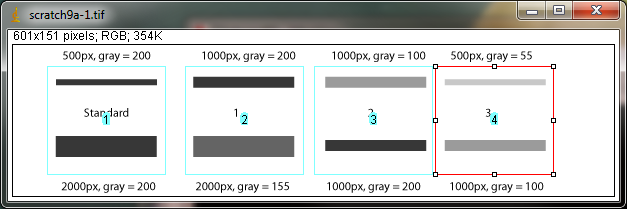
A dedicated laboratory scanner is designed to capture data in a scientific setting. Once you’ve got a decent film exposure or two, the data concerns don’t stop there – especially considering that the tools available to digitize data aren’t always designed with scientific rigor in mind.Įver notice how a copy of a copy of a copy makes for a lousy office memo? That’s because office scanners aren’t built for high fidelity capture – they’re built for an office. With film, you need to digitize your results. With an imager, your results are already digital and immediately ready for analysis. Be wise when changing the brightness or contrast of your blots, and always avoid changing the raw data. Journals often discourage altering image appearance too much, and outright ban doctoring images by removing artifacts or unwanted bands. Replicating AnalysisĪs with image capture, Western blot analysis that reduces variability wherever possible is the goal. Flat fielding is not necessary with proper optical design image capture should be uniform across the entire blot. Flat fielding is a post-capture method to correct for non-uniform illumination. A powerful imager will capture great data the first time, without making you endlessly ponder and control for numerous variables.įigure 5. For example, running a microwell plate instead of a blot on the same scanner. So where proper instrument development and design has taken place, the only choices left will be those that are dependent on your specific research needs. The definition of being human is that we mess things up. In any case, an instrument designed for the best image capture possible will require fewer decisions on the part of us mere mortals. Flat fielding is a fix for subpar capture, rather than a real solution. When instruments aren’t designed with the best performance in mind, blots may be altered post-capture to adjust for the non-uniform image with flat fielding. The entire field of view will ideally have a very low coefficient of variation. With proper optical design, image capture should be uniform across the entire blot. ECL signals may not be proportional to the amount of protein, due to the enzymatic amplification of signal. When using ECL for your detection chemistry, a runaway reaction creates a lack of proportionality. Fading of signals was observed for all substrates, with SuperSignal West Femto displaying the most rapid loss of signal. Signal instability of various chemiluminescent substrates was measured over time.

Chemiluminescent signals are unstable and time-dependent. ECL will give you different results when you measure at different times.įigure 2. Because signals are unstable, your results are dependent on timing. The answer you get depends on when you ask. When the HRP enzyme has consumed all the substrate, the signal (light) fades, and your opportunity for using that blot is over. There’s also a limited window for detection. Length of exposure to film or digital imager.Incubation time with antibodies and buffer.Keep these timing factors identical between replicates:

Non-uniform substrate distribution made some signals much stronger than others (compare orange to purple and blue). SuperSignal West Pico substrate was applied to the blot, followed by 5-minute film exposure.

Identical samples were loaded three times on the same blot (10 μg and 5 μg cell lysate). Availability of substrate affects signal intensity. If you’re skimping on substrate to save a buck, that can create additional issues by limiting the enzymatic reaction.įigure 1.

The amount of substrate becomes the limiting factor on the reaction, instead of the amount of HRP enzyme (secondary antibody). Once that happens, even substrate diffusion from an adjacent area may not be able to replenish substrate in that depleted area. In the case of applying “just enough” substrate, the reaction can quickly be over. Ignoring supplier recommendations, or applying substrate inconsistently to certain areas to save money can result in substrate depletion. It’s best to apply substrate equally across the blot, following vendor recommendations for volume of substrate per cm 2 of membrane. It can be avoided by ensuring substrate is in excess, as well as optimizing both primary and secondary antibody concentrations. Local depletion is when a high antibody concentration causes higher enzymatic activity in localized areas. Factors to watch out for include substrate pooling, bubbles, and non-uniform distribution of substrate, because each can affect signal intensity. Variable substrate availability in different areas of the blot causes inconsistent signal generation. The amount of substrate available to the HRP enzyme may be variable across the blot, which changes the rate of the enzymatic reaction. Substrate availability affects signal intensity.


 0 kommentar(er)
0 kommentar(er)
